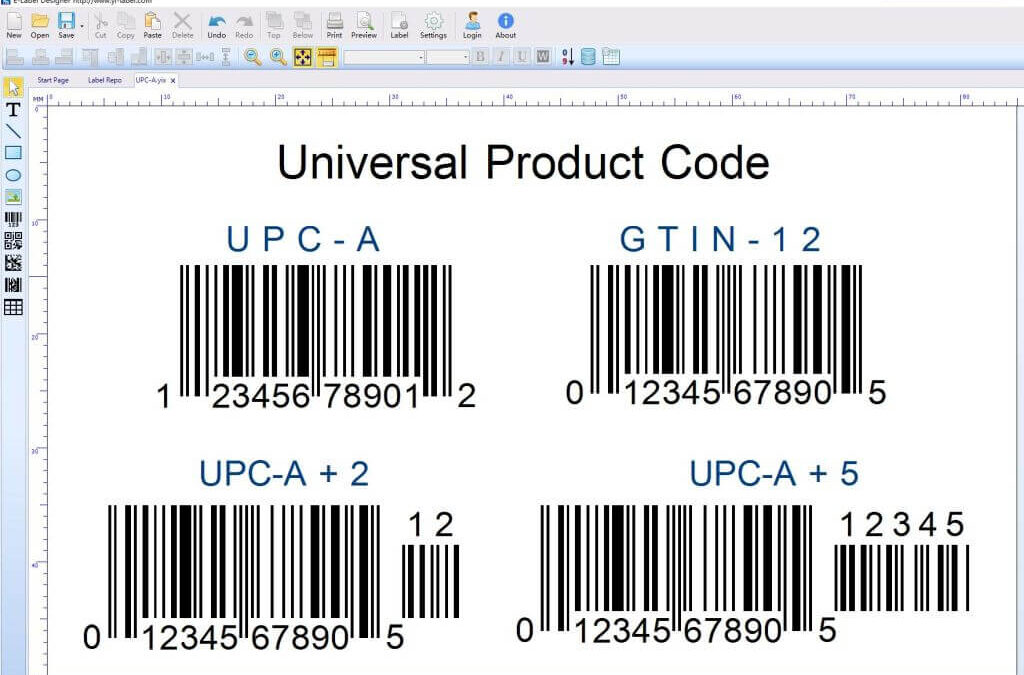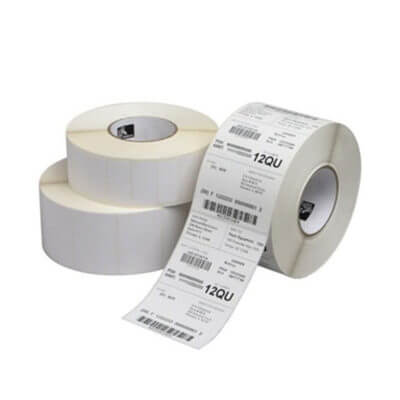Barcodes are scannable symbols that are made of lines, spaces, characters, and digits. Barcodes are used to identify and track products at different stages of the supply chain, such as in fulfillment centers to track inventory, on invoices to assist in accounting, or as a part of purchase process in retail stores.
Barcode terminology
Review the following table to learn about barcode common terminology:
| Term | Definition |
|---|---|
| Global Trade Item Number (GTIN) | GTIN is a unique and internationally recognized identifier for a product. The GTIN is the number printed below the barcode symbol. UPCs, EANs, and ISBNs are internationally recognized types of GTINs. Learn more about GTINs. |
| European Article Number (EAN) | EAN, also known as GTIN-13, is the barcode type used for consumer products globally usually outside of North America. |
| Universal Product Code (UPC) | UPC, also known as GTIN-12, is the barcode type used for consumer products usually in North America. |
| International Standard Book Number (ISBN) | ISBN is a numeric commercial book identifier that is assigned to each separate book edition and variation. ISBN codes are used to uniquely identify a book anywhere in the world. |
| GS1 | GS1 is a not-for-profit, international organization that develops and maintains standards such as barcodes. |
When to use barcodes
Barcodes are useful when third-party services help manage your products, or you have an extensive fulfillment or inventory tracking process. Check the following scenarios when barcodes might be required for your products:
- when selling products in online marketplaces
- when selling products wholesale to retail stores
- when products go through a warehouse, distribution center, or a fulfillment service
Tip
If you ship products with the Shopify Fulfillment Network (SFN), then each product variant requires a unique barcode number. Learn more about SFN requirements for barcode labels.
Barcode benefits
Many industries and businesses use barcodes in their workflows, because barcodes provide multiple benefits.
Review the following benefits of using barcodes:
| Benefit | Description | Action |
|---|---|---|
| Accurate inventory tracking | Barcode data is more reliable than manually entered data. Barcodes can track inventory, pricing information, and even product information such as expiration date or weight. | Tracking inventory in warehouses and databases. |
| Real-time data | Barcodes provide product information almost instantly. You don’t have to spend additional time on data entry or retrieval. | Searching for a product using the barcode within an online marketplace. |
| Easy and quick to use | It’s easy to use barcode scanners and barcoding doesn’t require extensive training. | Scanning barcodes in fulfillment centers. |
| Universally accepted | Barcodes are used and accepted worldwide in many industries. | Using barcodes in different businesses and industries. |
Common barcode types
Review the following table to learn about common barcode types:
| Barcode type | Structure | Capacity | Usage |
|---|---|---|---|
| UPC-A | GTIN-12 | 12 digits | Used on retail products, mostly in the North America. |
| UPC-E | GTIN-12 | 12 digits | Used for small packages or retail products such as cosmetics, packs of chewing gum, and cigarettes in North America. |
| EAN-13 | GTIN-13 | 13 digits | Used for retail products such as, periodicals, magazines, and books mostly outside of North America. |
| EAN-8 | GTIN-8 | 8 digits | Used on small packages or retail products such as cosmetics, packs of chewing gum, and cigarettes outside of North America. |
| Code 39 | Non-GTIN | 43 characters | Used mainly in warehousing and industrial applications such as automotive and electronics. It can encode letters and numbers. |
| Code 128 | Non-GTIN | 48 characters | Used in warehousing, apparel, food process, drugs, and medical equipment industries around the world. Code 128 has the highest number of characters per inch and it’s 20-30% smaller than Code 39. It can encode letters, numbers, special characters, and control codes. |
| ISBN | GTIN-13 | 13 digits (10 digits prior to January 2007) | Used on physical books and e-books around the world. |
If you want to learn more about barcodes, then refer to the GS1 Barcode Chart.
Barcode placement and printing best practices
How you print and place a barcode on a product can impact the ability of scanners to read your barcode.
Barcode printing methods
Depending on your product, barcodes can be printed in different methods. Review the following table to learn more about barcode printing methods:
| Method | Description | Example products |
|---|---|---|
| A barcode printed directly on a product. | A common method that uses laser printers to print the barcode directly onto the product when the barcode shouldn’t be separated from the product. | Books, metal cans, plastic bottles. |
| A barcode printed on a label that’s attached to a product. | Used by smaller businesses or the ones that don’t have a laser printer to print barcodes directly on a product. | Stationery, coffee, loose produce. |
| A barcode printed on a hangtag that’s attached to a product. | Used for products that lack a suitable surface for barcodes and for products that can be damaged by the label adhesive. | Apparel, giftware, table products. |
| A barcode printed on product packaging. | Used for products that come in a box or package. | Shoes, skates, electronics, and any packaged products. |
Barcode printing guidelines
Review the following general guidelines on how to correctly print barcodes:
- If you print your barcodes, then use a resolution of 300 DPI or higher, so that barcode scanners can scan it.
- Before you print a large batch of barcodes, print a single test sheet and then verify that the barcodes work correctly.
- Print the barcode number below the symbol, so the product is still identifiable from the number if the barcode is damaged.
- Make sure that the barcode is at least 1.5 inches wide x 1 inch tall. Review the recommended size of the GS1 standards.
- Use black ink or another dark color when printing barcodes. Avoid using red or brown ink.
- Print unique barcodes for each product variant, so each variant can be identified within the supply chain.
Barcode placement guidelines
Review the following general guidelines on how to correctly place barcodes:
- Place barcodes flat on the product and don’t fold them.
- Don’t surround the barcode in tape or shrink wrap.
- Avoid placing stickers or text elements too close to your barcode.
- Don’t truncate or cut off the top or the bottom of your barcode to make room for your label.
- Don’t put multiple barcodes on your product.
- Don’t put staples through a barcode.
- Don’t position a barcode on the product in an area with inadequate space.
- Don’t place barcodes on product edges.
- If your product is square, rectangular, circular, concave, or convex shaped, then consider using spot labels, hangtags, or carded sleeves.
If you want to learn more about best practices for barcode printing and label setup, then refer to GS1 guidelines for placing barcodes on products.



